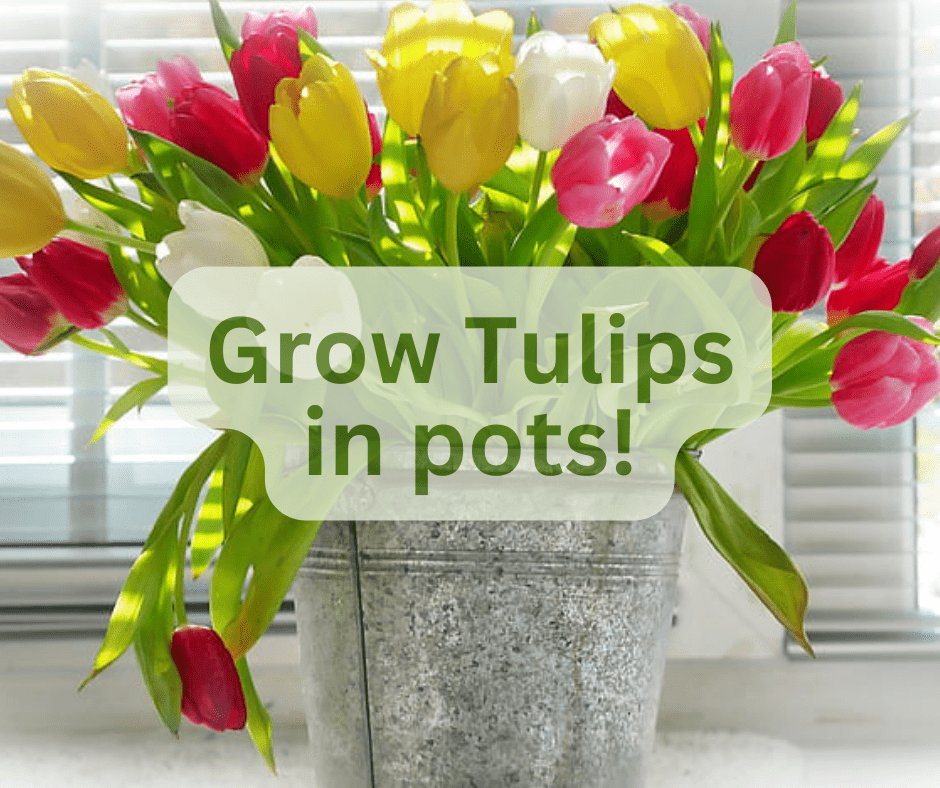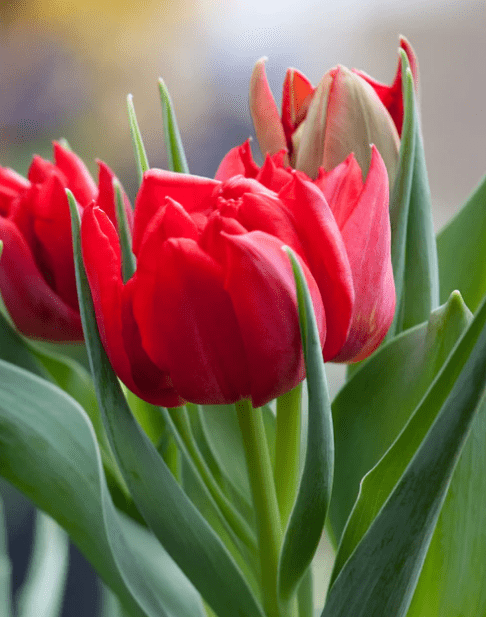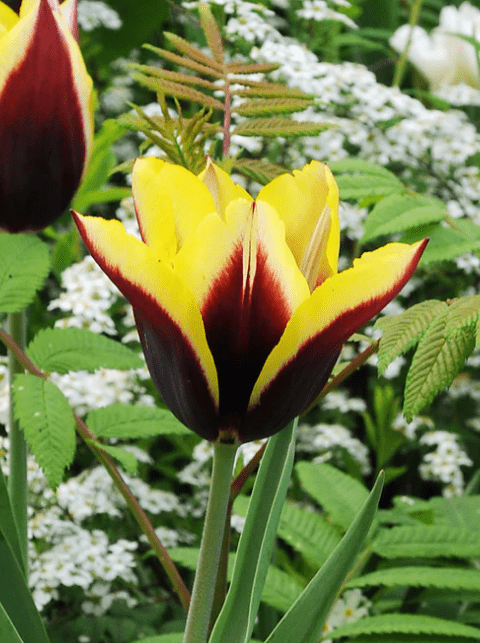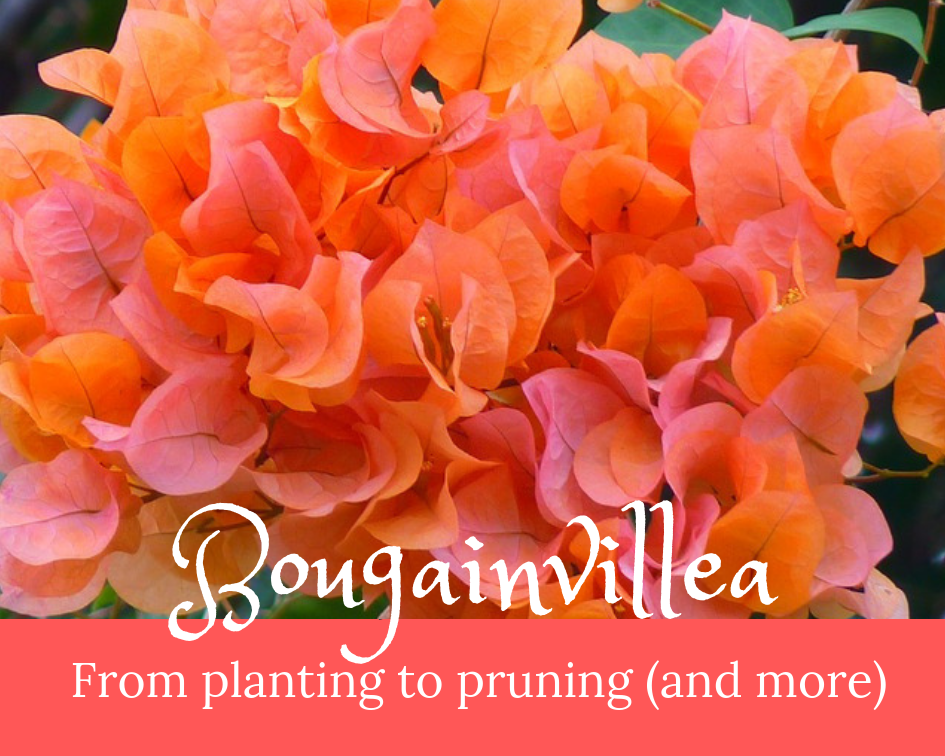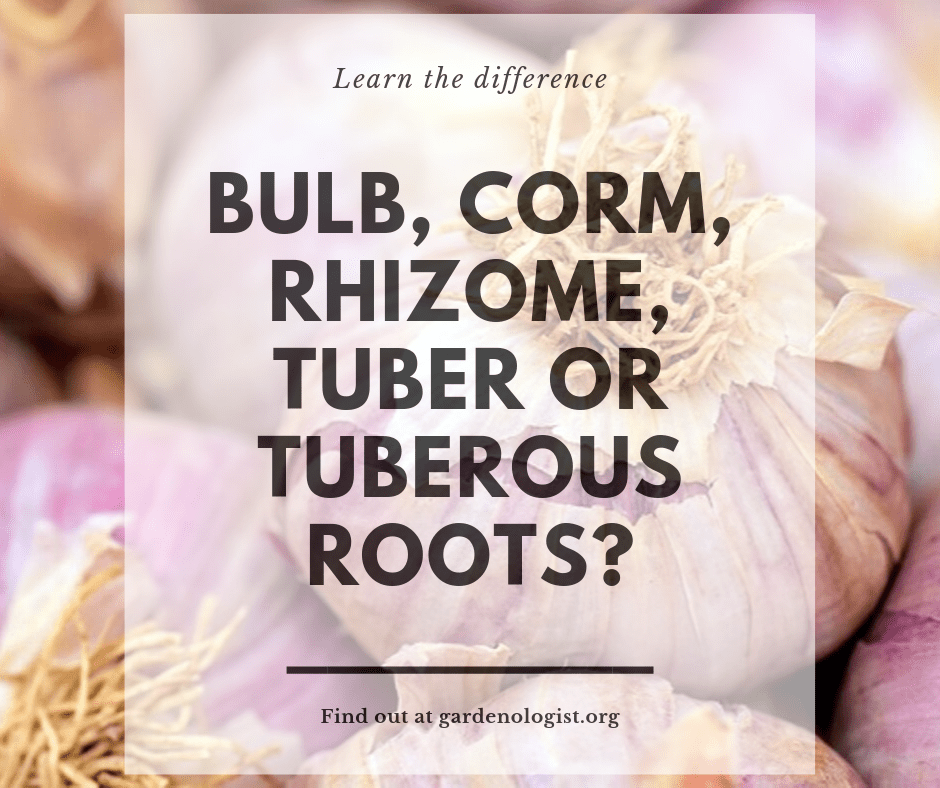This post may contain affiliate links. As an Amazon Associate we earn from qualifying purchases.
Fall is such an odd time in my garden, with so many plants going dormant and leaving big gaps in the landscaping. I long for the cheerful colors of spring; but if I hope to see them in spring, I need to plant the bulbs now.
This creates more landscaping gaps that won’t be filled for months. It takes an optimist to love a garden in slumber!
One of the questions we receive each late summer/early fall is about bulbs and, specifically, growing bulbs in pots. Today we answer a popular question, “Do tulips grow well in pots?”
First, Get to Know the Various Tulip Varieties
While there are only four subgenera of tulips (Tulipa spp.), the species count seems to be all over the map. Some sources claim that there are 75 species but we’ve seen others who claim 150.
Among these groups, there are about 3,000 varieties. Choosing your favorites to grow is a bit like trying to get a sip of water out of an open fire hydrant!
Let’s see if we can help you whittle down those choices.
Since you’ll be growing your tulips in a pot, let’s take a look at some of the shorter varieties. These are by no means dwarf varieties and the colors and shapes will knock your socks off!
By the way, we’ve named each flower’s hardiness zone. If you need to learn yours, we offer a handy zone-finder here.
‘Apricot Beauty’ Tulip
Don’t you just love this apricot-pink color? Hardy to USDA Hardiness Zones 3 through 8, it tops out between 12 inches and 24 inches in height.
Apricot Beauty is a single early tulip, meaning that it blooms for one season, but it blooms significantly earlier than other hybrid tulips.
Their stems are quite strong, so they won’t be flopping over in the wind and rain that spring brings. Oh, and it loves sunlight, so find a sunny spot in which to plant this beauty.
‘Abba’ Tulip
This dancing queen is what is known as a “double early” tulip. Like the single earlies, she is an annual and will only bloom for one season.
The “double” describes the flower, more reminiscent of a peony than a standard tulip. That red is just magnificent though. A show-stopper for sure.
Abba is hardy in USDA Zones 3 through 8 and grows to 12 inches in height, in full sun.
‘Gavota’ Tulip
Gavota is a member of the Triumph division of tulips. It’s the class with the largest range of flower colors. This particular plant blooms in midseason and will grow to 15 to 20 inches in height.
The purple petals with yellow edges make these tulips very popular. Best of all, they do very well in containers.
Gavota, a perennial tulip (it will be back the following season) and it is hardy to USDA Zones 3 through 8.
‘Flaming Flag’ Tulip
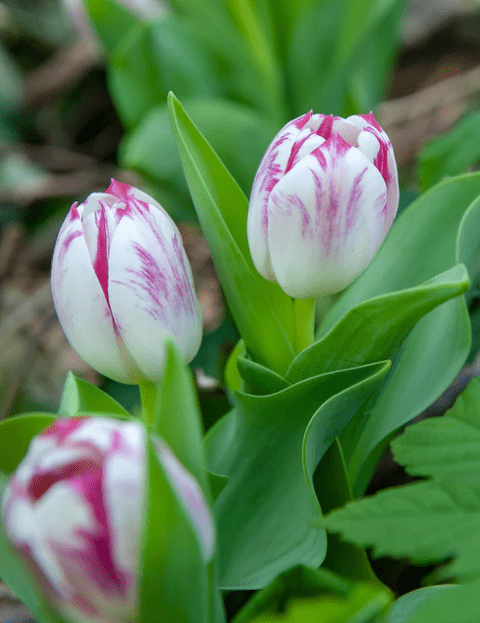
The petals of this Triumph division tulip are a creamy white with flames of purple. It’s an amazing sight, as each flower bears a slightly different pattern and color tones. Flaming Flag grows to 16 to 22 inches in height on sturdy, weather-proof stems. Hardy to USDA Zones 3 through 8.
When Should you Plant Tulip Bulbs in Pots?
First, a reminder: ensure that your tulip bulbs remain in a cool place (65 degrees Fahrenheit or cooler) until you’re ready to plant them.
If you live in a warm region, “Place the bulbs in a refrigerator, away from fruits and vegetables (these produce ethylene gas, which can harm the embryonic flowers inside the bulbs),” caution the experts at WhiteFlowerFarm.com.
“Make sure the bulbs remain dry. The usual prechilling time is ten weeks or longer at 40 to 45°F. Once the bulbs are removed from cold treatment, plant them right away,” they conclude.
Tulips are planted in the fall and appear the following spring. Wait until the soil temperature is 55 degrees Fahrenheit or cooler to plant them. Depending on where you live, this could be anytime between September to December.
Use a soil thermometer to determine the soil’s temperature at a depth of 6 inches. If you don’t have a soil thermometer, check the Resources section at the end of this post for where to get one.
Don’t wait too long to plant, however, as the bulbs don’t tolerate soil temperatures lower than 29 degrees.
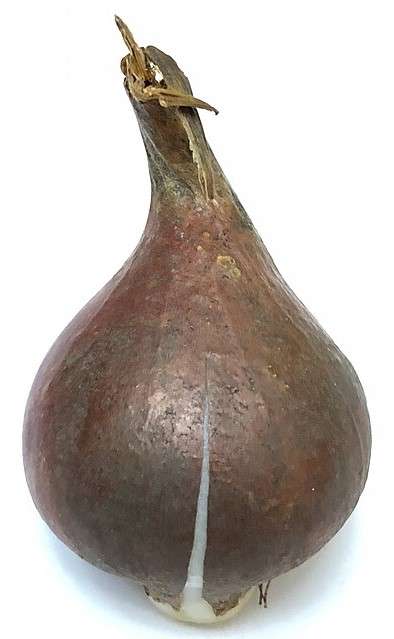
How to Plant Tulip Bulbs in Pots
You’ll need a pot with a diameter no smaller than 18 inches and a height of 15 inches according to the growers at DutchGrown.com.
They also caution that if you’ll be keeping the potted bulbs outdoors during the winter, you should step up the pot size to 24 inches in diameter.
“This way the pot will have enough soil to isolate the bulbs and protect them from freezing,” they said.
Ensure that the pot has enough drainage holes in the bottom to prevent the bulbs from rotting in soggy soil.
Now for the potting soil. You’ll find tons of homemade recipes online, claiming to be the very best for tulips. Your main goal should be to create or buy one that drains well.
This can be a mixture of potting soil and cactus mix, or potting soil with lots of perlite. The experts at the Chicago Botanic Garden suggest using one part peat moss, one part vermiculite, and one part perlite.
As long as the planting mix drains quickly, you’re good to go.
Fill the pot with soil until it reaches 10 inches from the rim. Place the tulip bulbs, pointed end up, on top of the soil. In pots, you can plant multiple bulbs close together, as long as they don’t touch one another.
Pour more soil over and around the bulbs until it reaches 2 inches from the top of the pot. The bulbs should be planted 8 inches deep (if they are large). Small bulbs should be planted about 6 inches deep.
Water the soil well until you’re sure it is completely moist.
Care of Potted Tulips
While the soil should remain somewhat moist, be mindful of how easy it is for the tulip bulbs to rot. On the other hand, withhold water when perennial tulips go dormant in the summer.
During the blooming season, deadhead the tulip plants as soon as the flowers fade.
Wait until dying leaves turn completely yellow before removing them.
Whether or not to fertilize your tulips depends on the type you’re growing. If they are one-season bloomers, there is no need to fertilize.
If they are among the varieties that return the following season, mix some compost or bulb fertilizer (according to package directions) into the soil in spring and water it in.
Common Tulip Diseases (with photos)
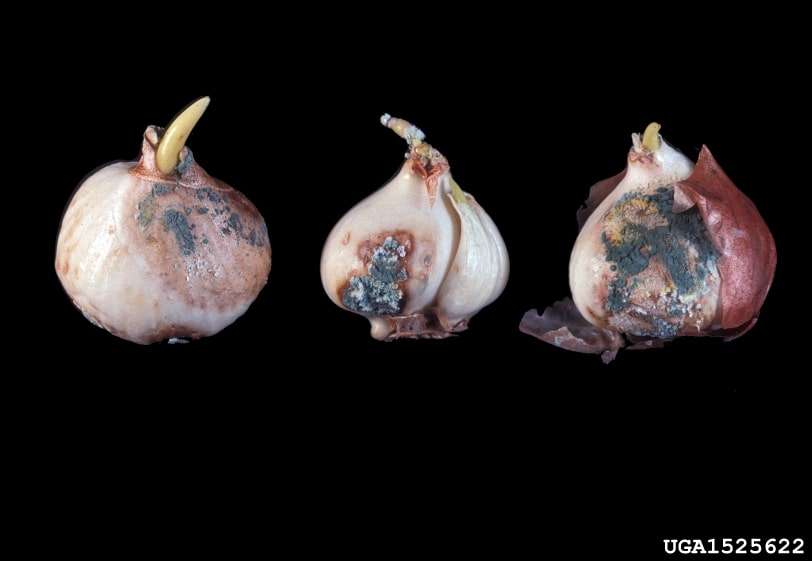
Blue Mold (Penicillium spp.)
“My tulip bulbs have mold!” It’s something we frequently read in our emails.
The culprit is either of two fungi in the Penicillium genus that cause Tulip-Penicillium Bulb Rot, also known as ‘blue mold.’
These creeps (see photo above) attack bulbs that contain injuries or have been weakened by something else. Then, if they are put away when conditions are moist, the fungi take advantage of the situation.
Symptoms of blue mold include brown spots and, often, a blue mold growth. If it’s an advanced case, “… the entire bulb may be affected and become hard and dry,” according to a study published in the Pacific Northwest Pest Management Handbooks. The experts advise that home tulip growers use cultural controls of blue mold.
- Handle the bulbs very carefully when digging them up.
- Provide adequate ventilation during storage.
- Get rid of damaged and diseased tulip bulbs.
- Avoid growing tulips in the same area for at least one year.
Botrytis Neck Rot or Tulip-Fire (Botrytis tulipae)
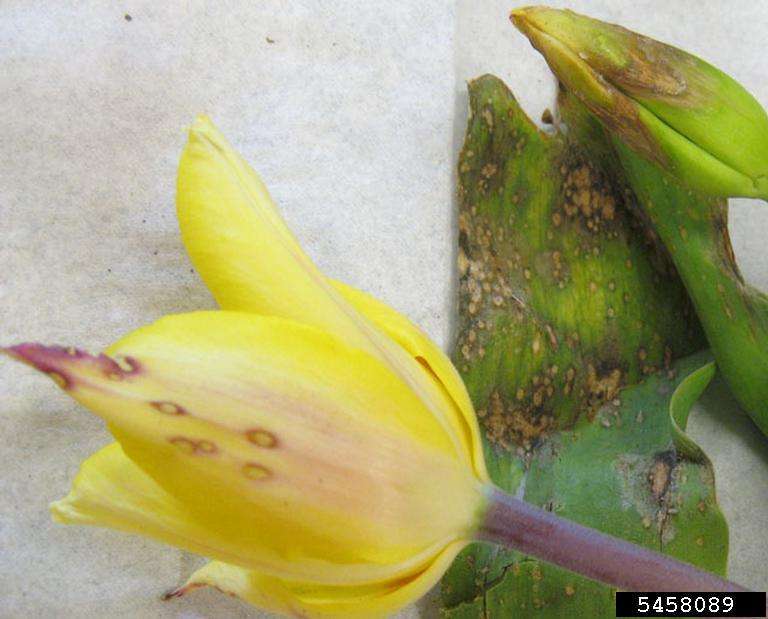
So many of us love the look of a mass of tulips in the garden. Although gorgeous to view, this type of planting can attract the fungus that causes Botrytis blight, often called ‘ tulip fire blight.’
As you can see in the above photo, the fungal organisms attack the leaves, symptomized by brown spots. These will grow larger, and in number, and often spread to the flowers.
You may also notice a mold that is brownish-grayish in color.
What causes it? High humidity, mainly. And humidity, my dear gardening friend, is caused by planting the tulip bulbs too close together.
This common tulip infection can kill the plant. To rid the garden of it, remove any infected plants. During periods of high humidity, consider using a fungicide as soon as you see the tulip break the soil in spring.
See the recommended fungicides in the Resources section at the end of this post.
Prevention of tulip fire includes watering the soil, not from overhead, in a manner that won’t splash soil onto the plant.
Allow some space between the bulbs when planting. Yes, that’s challenging when growing tulips in pots, but the alternative is that you won’t have your beautiful tulips in the spring.
Tulip Pests
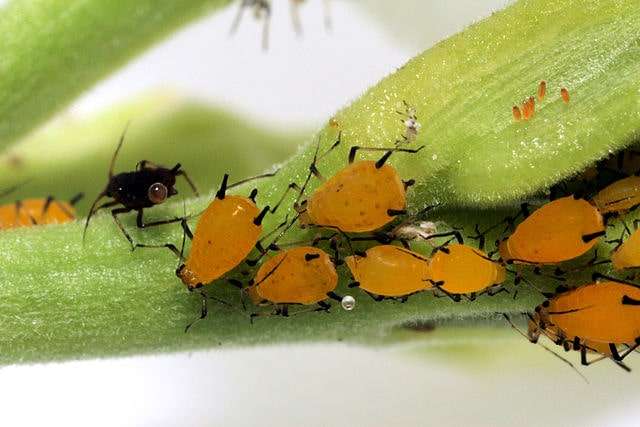
Aphids
At certain times of the year, they’re on just about every plant, or so it seems.
Contrary to common belief by many, aphids aren’t always white. In fact, they can be green, black, red, orange, brown or yellow, depending on the type.
They tend to congregate in large groups along the tulip’s stems and leaves. Here, they happily suck the plant’s sap.
While aphids can destroy a plant, it’s not by munching on it. They carry certain diseases which they can then pass on to the tulip. Here’s the nasty work they do:
- Aphids produce honeydew, a sticky clear liquid that attracts sooty mold pathogens.
- Certain aphids can inject a toxin into tulips, “…which causes leaves to curl and further distorts growth,” according to M. L. Flint, UC Statewide IPM Program and Entomology, University of California at Davis.
The easiest way to control aphids is with a strong blast of water from the hose. You may need to repeat the procedure two or three times to be completely rid of them.
Another method to try is to introduce natural predators to the garden. These include:
- Lady beetle adults and larvae
- Soldier beetles
- Lacewing larvae
- Syrphid fly larvae
See the Resources section at the end of this article for where to shop for these good guys.
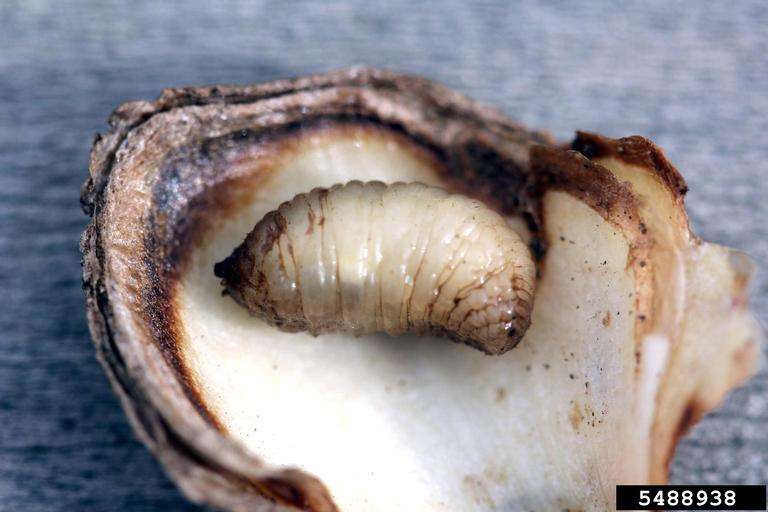
Bulb Fly Larvae
Two types of bulb flies, Narcissus bulb fly (Merodon equestris), and lesser bulb flies (Eumerus spp.) are attracted to tulips.
We love the descriptions of these flies on the UC IPM website:
“Adult bulb flies are stocky, hairy flies, blackish to dark green with pale yellow, orange, or gray markings. Adult bulb flies look like small bumble bees,” sounds more like a nightmare than a garden pest! But, they’re not finished.
“Bulb fly larvae are plump, wrinkled, dirty yellow, gray, white, or brownish maggots with a short brown or blackish breathing tube at their rear.”
Of course they breathe out of their butts, right? Goes along with the whole nightmarish description.
The problem with these guys is that Mama fly lays her eggs on either bulbs that are exposed above the soil or right around the base of the tulip plant.
The larvae eat into the bulb and stay there for a bit, munching on and destroying the tulip bulb.
Prevention is the only best method of control. Remember to handle bulbs carefully and to destroy any that are infested with pests.
Other common tulip pests include:
- Caterpillars
- Snails and slugs
- Spider mites
Mention of a pesticide or use of a pesticide label is for educational purposes only. Always follow the pesticide label directions attached to the pesticide container you are using. Be sure that the plant you wish to treat is listed on the label of the pesticide you intend to use. And observe the number of days between pesticide application and when you can harvest your crop.
Resources
Long Stem Soil Thermometer
Weather Resistant Round Planting Pot
Chlorothalonil Concentrated Fungicide
